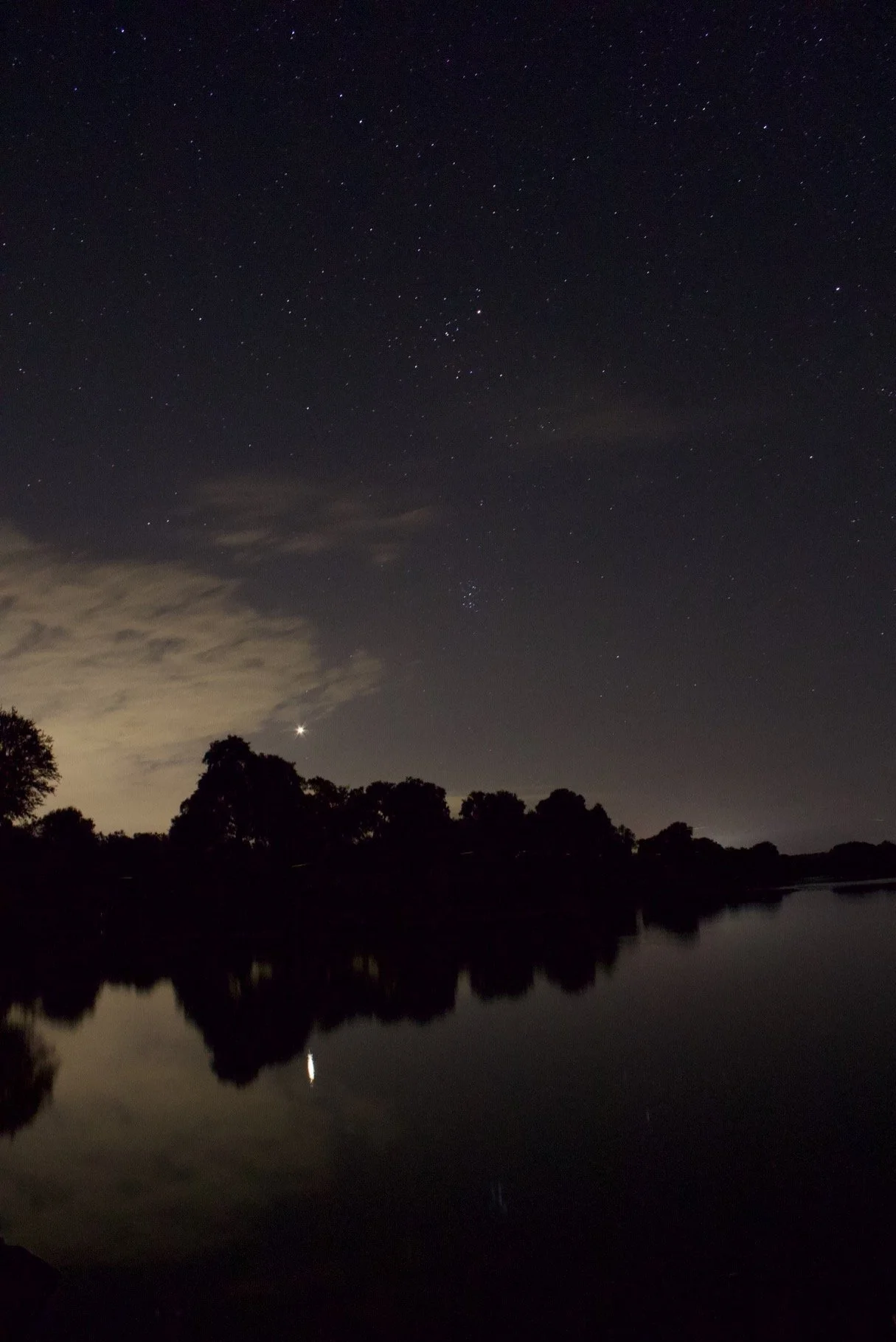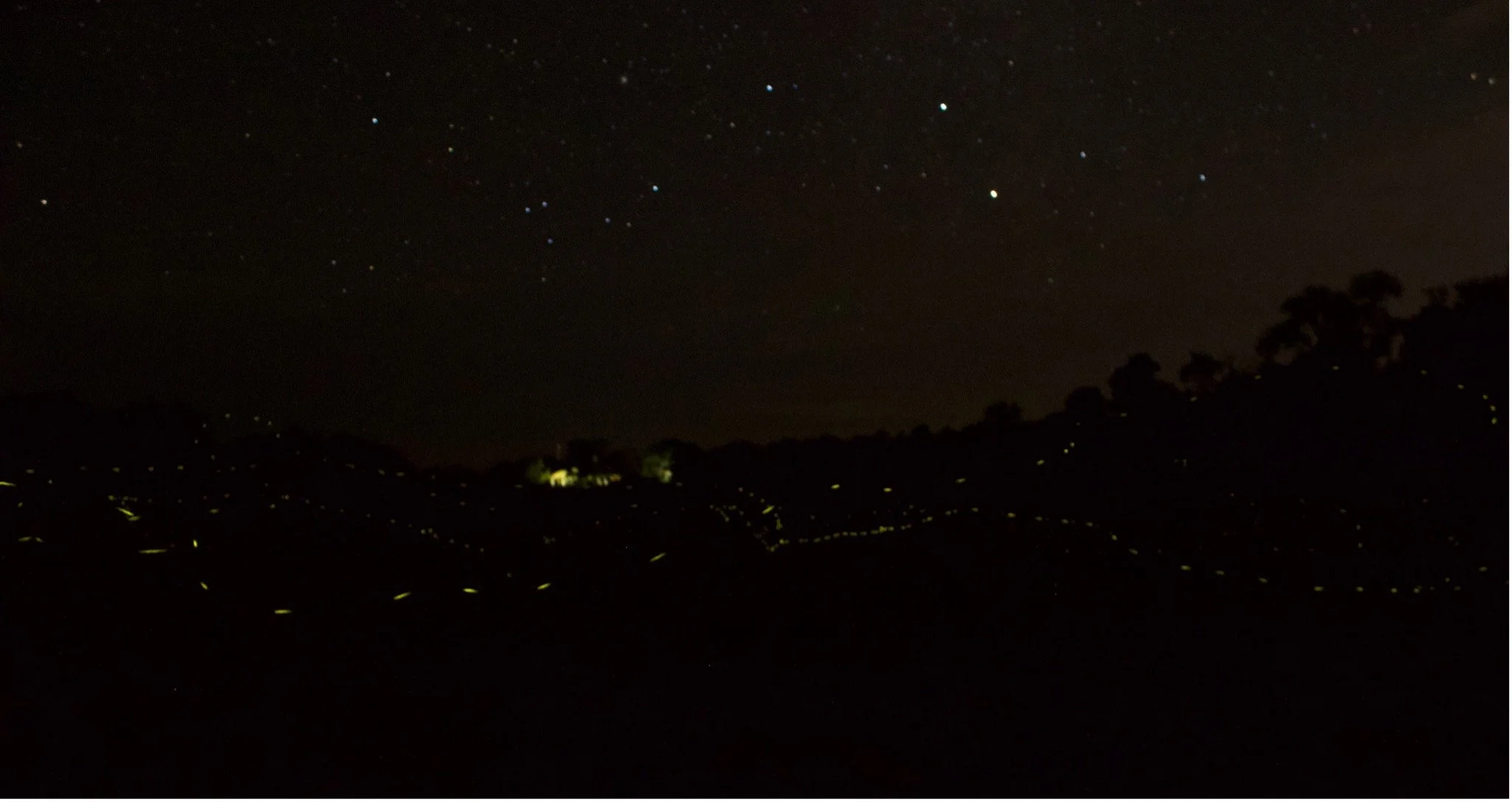Reflections at Night
Take a breath, and then another.
Imagine looking up and seeing a dark blanket sky with a hint of wispy smoky clouds lying on the horizon.
Let your eyes adjust to the twilight. Twinkling stars start to emerge. I focus my eyes on a bright star and as I do so, many fainter stars appear around it. A thought comes to mind – we live in such a fast-paced world, it can be so easy to overlook the small things, but these details can sometimes be lifechanging influences and stir something deep inside us.
Sitting in the Game Viewer, we’re parked on a crossing in the Sand river. I can hear the steady flow of water as it travels past the vehicle tires, navigating the rocks on our left and continuing towards the front of Ebony lodge. Vocalisations from water thick-knee’s, crickets and night jars break through the continual whooshing sounds, adding a different beat to the nocturnal orchestra. The shadowy dark silhouettes around us make the world look two-dimensional.
Not all is quite as it seems however. Hidden in her stems, bark and trunk can be found a highly toxic and deadly latex. A latex so poisonous that it was honed by African tribes and used to cover arrow heads when hunting.
As the light fades further, another light appears. Drifting past us, as if gliding along its own air current, a firefly blinks its luminous neon glow. Taking us back to a three-dimensional world, we see more and more of these marvellous beetles light up the river in front of us. With the reflection of the stars waving in the water below us and the fireflies dancing around the banks, we truly are completely compelled and absorbed by this mystical scene around us.
Watching this mass silent communication, we tried to capture the scene through the lens of a camera. The picture above shows the static stars and with the long exposure, the blinking green florescent light of the fireflies as they move through the air. Each species has a specific pattern or rhythm in which they flash. The light is produced through a chemical reaction known as bioluminescence or ‘cold light’. This is when oxygen combines with the chemical luciferin and the enzyme luciferase, with the presence of ATP (adenosine triphosphate) and light is produced. The fireflies are able to control the pattern of light by adding oxygen, thus when the supply of O2 is halted, the light goes out. A layer of reflective uric acid crystals in the abdomen help to amplify the illumination, making them even more impressive as they scout the lowland for mates.
Although a mesmerising and spectacular scene to behold, not everything is always as it seems. Each firefly has a unique flash pattern used to identify other members of the same species and to attract mates. In some species the females use this unique pattern to their advantage and mimic the signals of other species, attracting curious males for a midnight feast.
Watching the active fireflies zooming around us is such a contrast to the star constellations sparking motionless above us. Taurus the bull shines to the west, the head ‘V’ shape conspicuous in the sky. The brightest star within this constellation is a red giant called Aldebaran. When you look at this star, the light you see was actually produced 65 years ago and it has taken all that period to reach us. Time is a representation of change and something we cannot pause. The earth will keep rotating and the stars will keep on shining. I challenge you, through this tricky time with the Coronavirus devastating the world, to look at how you spend your time.
Time is something we all have, how we spend it is where it counts.

